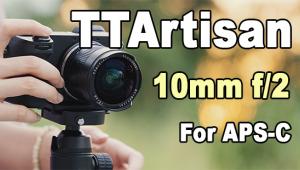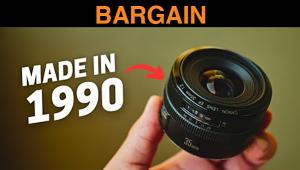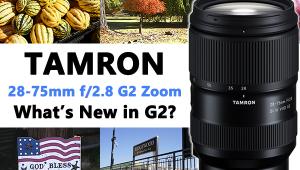Wide-Angle Lenses for Wide-Open Spaces: Field Testing Three Great Lenses in Antarctica
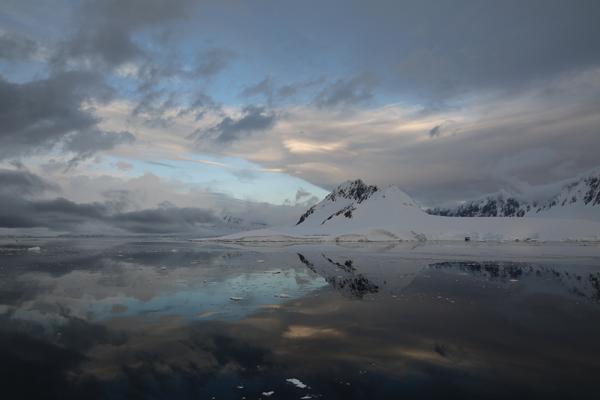
Sometimes you want to capture expansive vistas without resorting to post-capture tricks like stitching multiple frames together. This was the case on my recent excursion to Antarctica when I wanted a wider perspective than I achieved on an earlier visit with a 24mm lens (which transformed into a 38mm on my crop-body camera). The question I asked myself was ”how wide is “wide enough?”
My first thought was that a fisheye would be too wide for what I envisioned. Then there’s the “diagonal fisheye” which provides a frame-filling image with significant distortion, or a super-wide rectilinear lens with less distortion. But even with the latter, if your framing isn’t meticulous, the edges of images begin to bow and warp.
In short, I decided that for me, “wide enough” begins at 20mm and ends at 24mm. Below 20mm either meant dealing with more distortion than I was willing to accept or spending more than I was willing to pay for a premium rectilinear lens. As for zooms, I’m a Canon guy and didn’t want to spend $1,500 on a Canon EF 16–35mm f/2.8L II USM lens when half the range is wider than I wanted. There’s also the matter of primes being a bit sharper than zooms.
Sticking with primes narrowed my search to three lenses I chose to test during my Antartica trip: the Canon 20mm f/2.8 USM, Zeiss Milvus 21mm f/2.8, and Sigma 24mm f/1.4 DG HSM Art. Here's what I thought of them during this field test.
Canon 20mm f/2.8 USM
This is the oldest, lightest and least expensive lens of the group. You can literally buy three Canon 20mm lenses, lose two, and still have less invested in glass than the cost of one Zeiss Milvus. While some pixel-peepers have issues with this lens, I’m happy with mine.
Keep in mind that the latest Canon DSLRs employ software correction to optimize lens performance. One feature I appreciate about this lens is the ability it offers to manually override focus when shooting in the AF mode. You simply turn the focus ring to fine-tune focus without the need to switch into a manual focus mode.

The f/2.8 aperture isn’t “see in the dark” fast, but for most landscape work it’s fast enough—especially since most of the time you’re going to be stopping down to maximize depth–of–field. Do that, and most of the alleged faults disappear.
Plus, being “only” an f/2.8 means the lens utilizes 72mm filters which are both common and relatively inexpensive. For only $489 this is a nice lens that weighs a mere 14 oz. It does not, alas, come with a lens hood, so you have to spend an extra $65 for an authentic Canon hood, or $25 for a knock-off. While this lens is not image-stabilized, it offers solid auto-focus performance.
Zeiss Milvus 21mm f/2.8
This is an awesome but somewhat demanding piece of gear. First of all, it’s heavy. The Canon–mount version (it’s also available for Nikon) tips the scales at 30 oz. Secondly, it is manual-focus only. The lack of autofocus isn’t a critical problem for landscape photography because you’ll most likely be shooting at infinity. Plus, if you depress the shutter button halfway as you focus, the camera will beep when you’re on. Filters are expensive for this lens because of the 82mm thread.

The Zeiss hood is a work of art in itself. The Milvus barrel is gently curved and the sturdy aluminum hood picks up the curve and turns the complete unit into a Grecian urn of an optical instrument. But the real payoff is that the Zeiss Milvus is razor sharp edge-to-edge. Naturally, all this precision and build quality isn’t cheap, with an MSRP of around $2000. Trust me, I was tempted.
Sigma 24mm f/1.4 DG HSM Art
Now we’re really being tempted. Sigma has seriously upped the ante with their new Art lenses which are outstanding. The 24mm was the widest available before my trip; since then, Sigma has unveiled a wider lens, the 20mm F/1.4 DG HSM. (We reviewed it here.)

The Sigma 24mm Art is a cracking good deal with and a lot of features. At 23 oz. it splits the weight difference between the Canon and the Zeiss lenses mentioned above. It also features autofocus which is always a nice option. Plus, there’s the unusually fast f/1.4 maximum aperture. How many wide–angle lenses do you know of with that speed? Yes, for most landscape work you want maximum depth–of–field. But for architectural or low-light photography the extra speed is often a welcome benefit.
With a 77mm filter size, the lens features aspherical glass, FLD and special low dispersion elements. A lens hood is provided and while it’s not as beautiful as the Milvus hood, it is sturdy, locks in place, and does the job. At a list price of $849, the Sigma 24mm is more than tempting; it is dangerously close to a must-have lens.
Into Antartica
The trip itself proceeded pretty much without incident. We flew to Buenos Aires, changed airports and traveled to Ushuaia. Then we took a bus to the pier and boarded the Sea Adventurer to spend two days crossing the Drake Passage; at which point we beheld the Antarctic Peninsula. That’s a lot of gear hauling—explaining why I kept the lens assortment to three wide-angles (in addition to my regular equipment).
While walking around in Ushuaia, waiting to board the ship, I tested the Sigma and its fast aperture on a Canon 7D Mark II. In a park between town and the sea there’s a bust of Vice Commodore Mario Luiz Olezza, famous in Argentina for flying to and from Antarctica.
I photographed the monument in Program mode with an exposure of 1/320 at f/8. With those settings a building in the background remained in relatively sharp focus. I then switched to Aperture-Priority and shot wide open. At f/1.4 and ISO 100, the camera gave me a shutter speed of 1/8000. Even then, the histogram was crowded to the right. So if you want wide-angle nighttime shots, this is the lens for you.
Crop-Body Considerations
Those using a crop–body camera, take note: The Sigma 24mm has a crop factor equaling a 38mm lens on a Canon, and a 36mm on a Nikon. Thus, you essentially end up with a 35mm f/1.4 lens, for street photography and the like. A Canon 35mm f/1.4 runs close to $1,100, and the Nikon is over $1,500. So with the Sigma you get great performance in a smaller/lighter crop–body lens for a lot less money.
There are a few things to consider when shooting this way. First, regardless of how tall you are it’s important to get belly-up to the rail or you’ll have “extras” in your shot—extras like someone’s head, your hands, the camera body, railing, lower deck, etc. With anything but a wide-angle, you can shoot between the people in front of you.
With these lenses, that wasn’t possible. Secondly, you have to be very precise with your metering. Regardless of framing, you are going to have a lot of sky in the image, and that can matter. What I found on this trip was that even overcast days could be very bright. Unless the cloud cover was just about down on the deck I was shooting at eye-popping settings.

During our passage through the Lemaire Channel the overcast was enveloping the mountaintops. And yet, I was shooting at ISO 50, 1/200 and f/6.3. On a previous trip, a sunny day had a typical exposure of ISO 100, 1/320 and f/11. There was no danger whatsoever of a shallow depth–of–field causing problems with landscape shots. Third, you have to put up with lens envy. Whenever I mounted the Zeiss, eyes swiveled to me.
The difference in field–of–view between these lenses is not large, but it is noticeable. At one point, while relaxing in the lounge between trips out into the cold, I noticed the lounge was symmetrical and there were a couple of coffee cups on the tables to either side. With a little bit of crockery adjustment I could demonstrate the difference in field of view, and also the distortions that appear when objects are too close to the edges of the frame.
The Canon at 20mm was wide enough to include both cups in the frame while the 21mm Zeiss cut off parts of the cups. Unfortunately, I neglected to take that shot with the Sigma.
Conclusions
The three lenses differ in age and build. The Canon debuted before Bill Clinton took office, is not an L lens and lacks weather-sealing. It won’t exactly suck moisture out of the air, but it doesn’t have anything besides the tight fit of lens to camera to keep water out.
The Zeiss, on the other hand, is sealed like the mummy’s tomb. That bright blue ring on the mount is a visible clue, but the all-metal construction and multiple internal seals against water and dust make it the equivalent of an armored lens. Of course, there’s the resulting weight and cost to consider. The Sigma 24mm Art lens has a surprisingly sparse description of its weather-sealing; as in no description at all.
My choice? I decided I want the perfect lens; the 20mm focal length of the Canon, the autofocus of the Canon and the Sigma, as well as all the sharpness I can get. The price of the Zeiss, with manual focus, is just enough to keep me from getting one. The Canon is just over half the cost of the Sigma, but the Sigma has autofocus, sharpness, and that fabulous f/1.4 aperture. Oh, if only Sigma made a 20mm. Oh wait, they do. Darn, life just got complicated again.
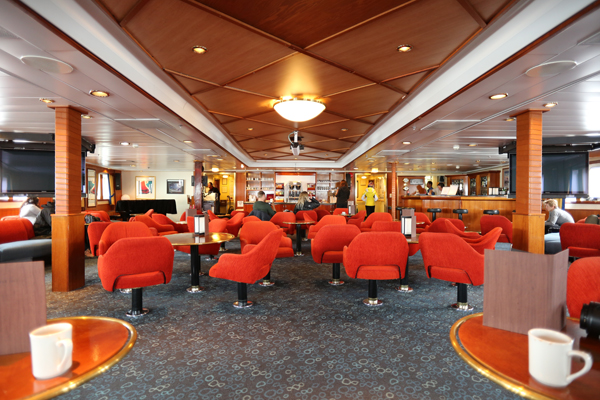
Yet, the crusty old Canon holds up despite being old enough to pre-date the Internet. With Canon software upgrades to correct known distortions and aberrations, it does the job well, at low cost, and light weight. The Zeiss is to-die-for gorgeous and works like the jewel it is. But, the Sigma isn’t very far behind and you can literally buy two Sigma lenses for the price of one Zeiss and gain autofocus in the bargain.
My vote: Pony up and buy a Sigma. I’m really working hard to justify the cost, and I might just do that and accept the added heft. Then again, getting to Antarctica means keeping a close eye on weight.
Oh, the dilemmas we face.
- Log in or register to post comments
